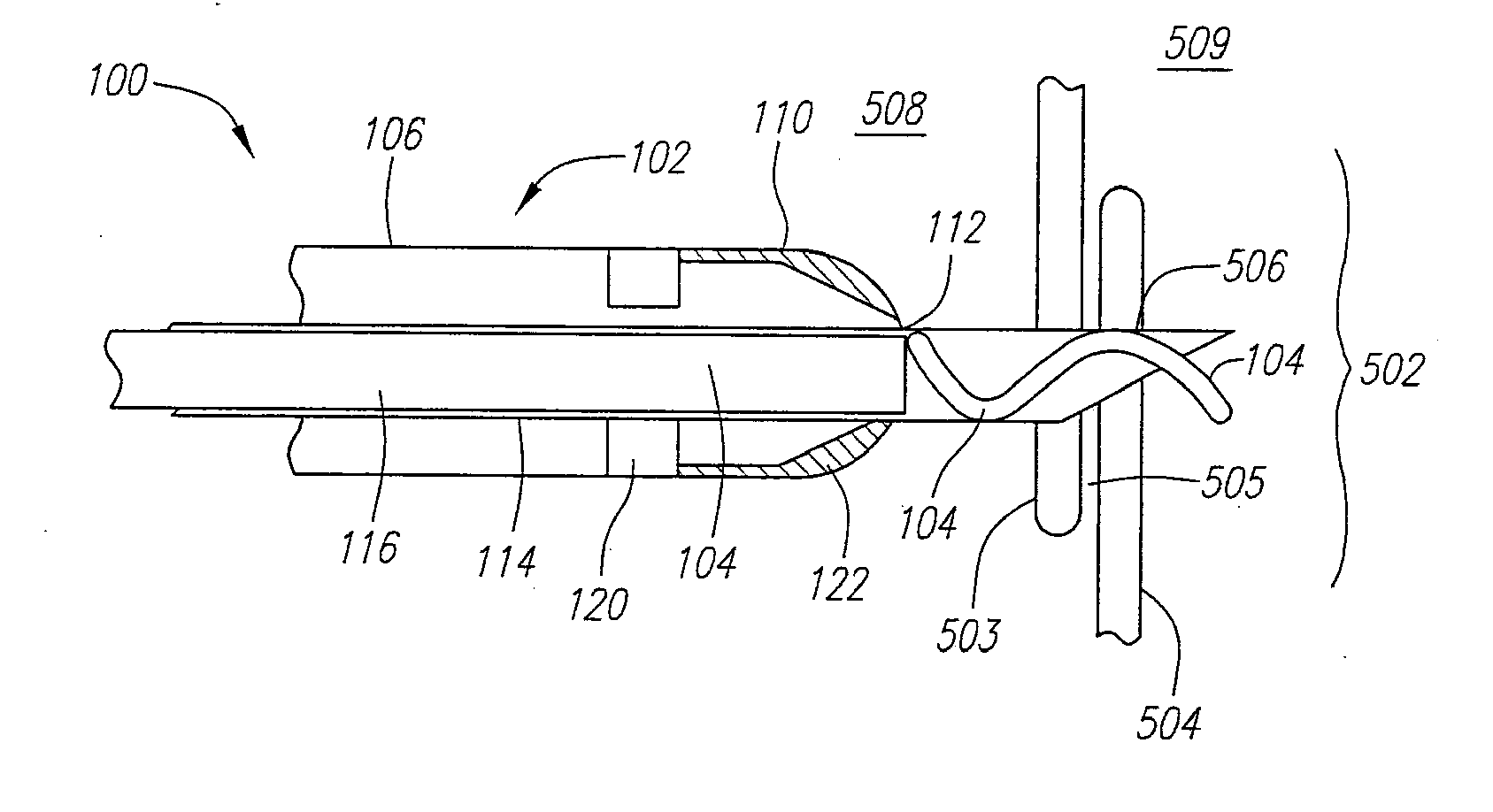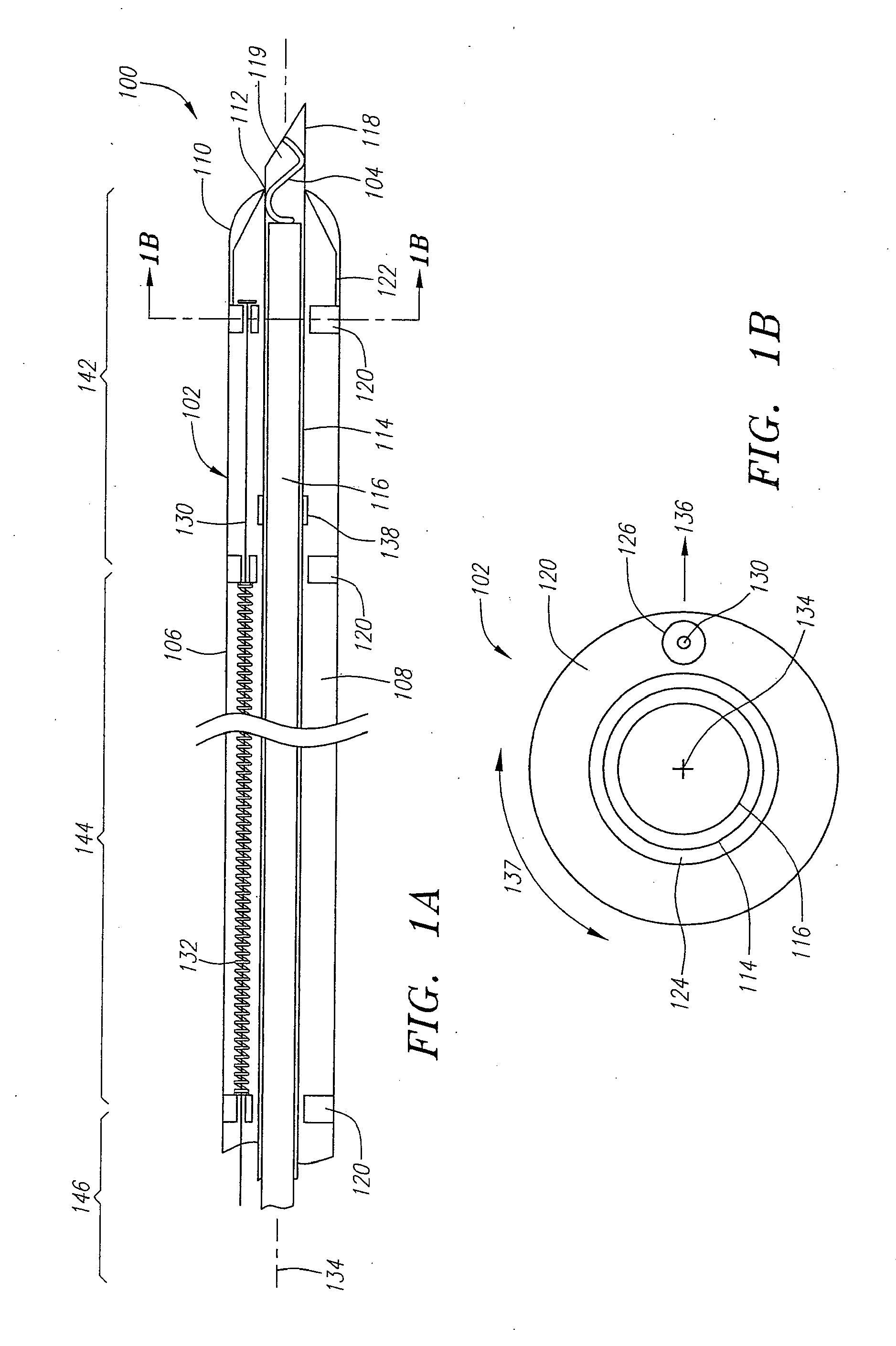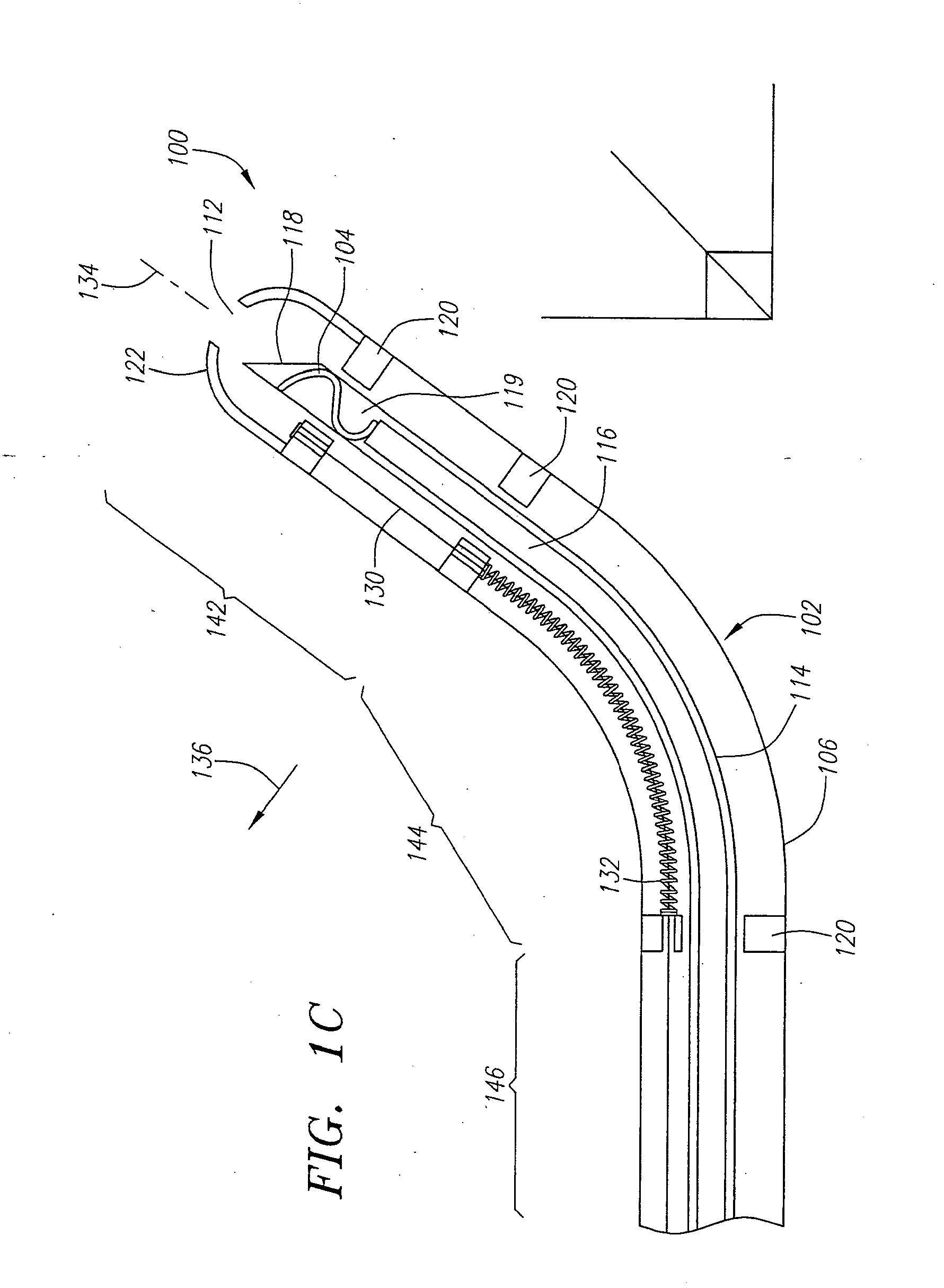Systems and Methods for Closing Internal Tissue Defects
a technology of internal tissue defect and system, applied in the direction of surgical staples, mechanical equipment, veterinary instruments, etc., can solve the problems of high risk, serious complications for patients, and inherently difficult treatment of internal tissue defects
- Summary
- Abstract
- Description
- Claims
- Application Information
AI Technical Summary
Benefits of technology
Problems solved by technology
Method used
Image
Examples
Embodiment Construction
[0031] The systems and methods described herein provide a deformable elastic clip and a steerable delivery device for use in the treatment of internal tissue defects. Preferably, these systems and methods are used to treat a septal defect where an undesired opening allows blood to shunt within the heart. Examples of such defects include PFO's, PFA's, ASD's, VSD's and the like. Frequently, the opening in the septum is surrounded by overlapping flaps of tissue that have failed to close properly. The steerable delivery device can be used to steer the distal end of the delivery device into proximity with the tissue defect and position the clip in close proximity to these tissue flaps. Once in position, the steerable delivery device can deposit the elastic clip over the flaps such that the clip can draw the flaps together and at least partially close or seal the opening. The clip can then remain engaged to the tissue for an indefinite period of time, holding the defect closed and giving ...
PUM
 Login to View More
Login to View More Abstract
Description
Claims
Application Information
 Login to View More
Login to View More - R&D
- Intellectual Property
- Life Sciences
- Materials
- Tech Scout
- Unparalleled Data Quality
- Higher Quality Content
- 60% Fewer Hallucinations
Browse by: Latest US Patents, China's latest patents, Technical Efficacy Thesaurus, Application Domain, Technology Topic, Popular Technical Reports.
© 2025 PatSnap. All rights reserved.Legal|Privacy policy|Modern Slavery Act Transparency Statement|Sitemap|About US| Contact US: help@patsnap.com



